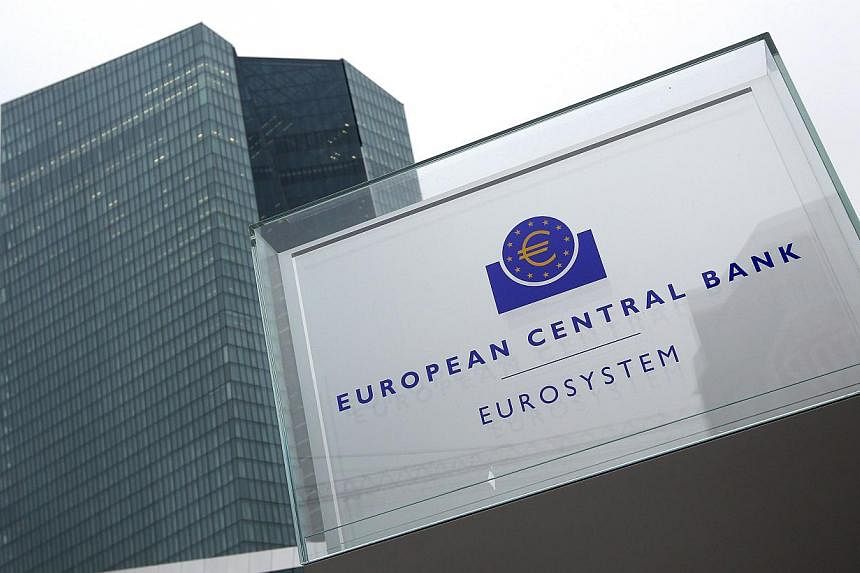SINGAPORE - The European Central Bank announced on Thursday (Jan 23) that it will spend at least 1.1 trillion euros (S$1.7 trillion) in massive bond purchases, known as quantitative easing or QE, to ward off deflation in the eurozone and kickstart the stagnant economies of the 19 countries that have the euro as their common currency.
What is deflation?
Deflation is an extended period of falling prices when people put off purchases because they expect prices will fall further, leading to companies deferring their own spending as demand falls. This can trigger a damaging cycle of falling prices, production, investment and employment.
Consumer prices in the eurozone fell by 0.2 per cent year-on-year in December, the first drop in more than five years, driven down mainly by tumbling oil prices.
Normally, central banks keep inflation (and deflation) in check by adjusting their key interest rates.
If the economy is in downturn and companies are nervous about the future and scaling back on investment, a central bank can reduce the overnight rate that it charges banks, reducing their funding costs and encouraging them to make more loans.
In the wake of the financial crisis, the ECB, like other central banks around the world, slashed their key interest-rates to close to zero. But that still failed to spark a sustained economic recovery, so they have resorted to more unconventional tools - like QE - to encourage banks to pump money into the economy.
What is QE?
Under QE, a central bank in effect creates money by buying securities such as government bonds from banks with electronic cash that did not exist before. The aim is to stimulate the economy by encouraging banks to issue more loans.

In theory, the central bank can also purchase corporate debt, but the market for sovereign debt is much bigger and would therefore have a much bigger impact.
In order to get round the ban on government financing, the ECB buys bonds that have already been bought by banks.
In the past, the ECB has already bought up the sovereign bonds of a number of the countries hit hardest by the crisis, such as Greece, Portugal and Ireland. But these purchases were not considered to be QE because they were targeted specifically at the countries concerned and not on a wide scale.
Does QE work?
The US Federal Reserve launched three QE programmes, buying up around US$4.0 trillion of debt in total. The Bank of England also used QE several times, first in 2009 and then in 2011 and 2012.
Berenberg Bank economist Rob Wood estimated that Britain and the US averaged 3.0-per cent nominal growth since embarking on QE, while the eurozone had only managed to clock up growth of 1.1 per cent.
The Bank of Japan was the first to use QE as tool, back in the early 2000s, but the Japanese economy is still entrenched in deflation.
Nevertheless, QE for the eurozone is different because the ECB will buy the debt not of just one country, as was the case in the US or Japan, but of 19 different countries in very different states of economic health.
That raises a number of issues, since the sovereign debt of one country may be riskier than another.
Critics had expressed concern that European taxpayers would have to foot the bill if any one country defaulted on its debt.
But the ECB plan has been designed so that only 20 per cent of those risks would be shared, with the other 80 per cent to be shouldered by the national central banks of the countries concerned.
Sources: AFP, BBC


